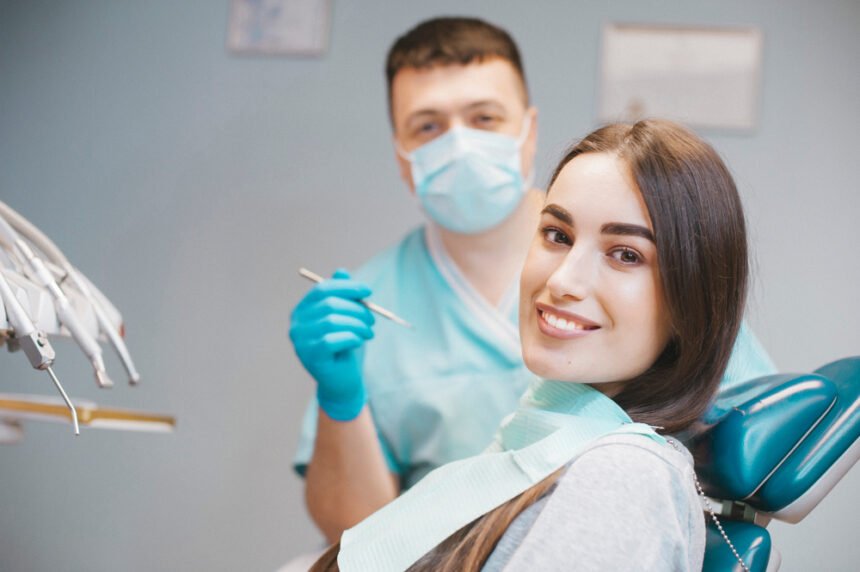The field of dental restoration has undergone remarkable advancements in recent years, paving the way for a future where oral health and aesthetics can be seamlessly restored. Thanks to cutting-edge innovations and breakthrough techniques, dentists have various tools and approaches to provide patients with superior dental restoration outcomes.
This article will discuss emerging technologies, including digital dentistry, biomaterials and tissue engineering, virtual reality and augmented reality. These developments can revolutionize traditional dental practices with improved patient outcomes and greater efficiency.
By exploring the advances in these areas, this article will present an overview of what lies ahead for dental restoration.
1. Intraoral Scanning
Intraoral scanning offers dentists a revolutionary approach to dental restoration, providing unprecedented accuracy and efficiency in creating custom restorations. This technology uses 3D imaging to collect exact measurements of the mouth, allowing restorations to be fabricated with intricate detail.
Not only does this improve patient comfort, as no physical impressions are necessary, but it also reduces time spent on clinical visits by eliminating steps in traditional fabrication processes. Additionally, intraoral scanning allows clinicians to preview the outcome of the restoration before fabrication even begins.
2. Computer-Aided Design and Manufacturing (CAD/CAM)
CAD/CAM has revolutionized the production of dental restorations, creating an efficient and accurate process for fabricating custom prosthetics. It’s a digital technology that involves scanning an intraoral impression to create a three-dimensional model to design the restoration.
The restoration is then milled from a block of porcelain material using computer-controlled milling machines. This results in high-precision restorations that are structurally sound and less prone to fracture than traditional castings.
Additionally, CAD/CAM eliminates the need for physical impressions, reducing chair time for patients and eliminating the need for laboratory technicians to manipulate models physically. As such, it significantly reduces turnaround time and cost associated with producing dental restorations while improving accuracy.
3. 3D Printing in Dentistry
3D printing has become a popular option for producing dental prosthetics, offering an alternative to traditional CAD/CAM fabrication techniques. This cutting-edge technology uses digital 3D models, which can be designed on computer software, as the basis for printing custom-made dental restorations.
Digital models are then sent to 3D printers that use various materials, such as acrylic resins and waxes, to create the restoration. The accuracy of 3D printing allows precise measurements and shape modifications with minimal wastage of material. Additionally, the process is fast and requires little upfront cost compared with other manual or machine fabrication techniques.
4. Nanotechnology In Dental Restoration
Nanotechnology has enabled dentists to develop more precise and accurate dental restorations. The development of nanostructures in dentistry has allowed for greater control when restoring teeth, with the ability to create ultra-small particles that can be precisely positioned on a tooth’s surface.
Nanoparticles can also deliver drugs directly into cells, effectively treating gum disease and other conditions. Furthermore, nano-scale materials that mimic natural enamel have been developed, providing an alternative to more traditional filling methods such as amalgam fillings or composite resin fillings. This increases the durability of the restoration while still maintaining a natural look and feel.
5. Tissue Engineering And Regenerative Dentistry
Tissue engineering and regenerative dentistry, an emerging field of research, is rapidly gaining traction to develop new strategies and treatments to improve oral health. This interdisciplinary approach combines biomedical engineering principles with tissue science to create functional tissues for dental restoration.
It involves harvesting healthy cells from nearby tissue, followed by their proliferation and differentiation in vitro before being transplanted back into the patient’s mouth. These techniques could be used to replace missing teeth or repair damaged structures such as those affected by periodontal disease or tooth decay. Additionally, tissue engineering could regenerate complex systems, such as salivary glands or nerves, that enable sensation.
6. Augmented Reality (AR) In Clinical Practice
AR in clinical practice revolutionizes dental restoration by allowing clinicians to visualize three-dimensional anatomical structures accurately. It expands a clinician’s view of real-world physical objects with virtual images, allowing for more precise restoration techniques.
This technology can be used to plan and execute complex restorations, such as full-mouth reconstructions, all while keeping the patient comfortable throughout the process. AR also offers advantages such as enhanced accuracy, reduced preparation time, and improved patient satisfaction levels due to greater precision and fewer visits.
Additionally, computerized 3D imaging allows for a higher level of accuracy than traditional methods since it can detect even small changes in tooth structure or anatomy that might be missed with conventional tools.
7. Virtual Smile Design
Virtual smile design is an advanced cosmetic dentistry technology that offers a realistic and intuitive way to plan and simulate dental restorations for patients. This technique allows dentists to customize the shape, size, color and position of teeth digitally to preview the outcome before any procedure takes place accurately.
Furthermore, this technology provides precise measurements for laboratory technicians when fabricating prosthetics such as crowns or bridges. This helps enhance accuracy and reduce mistakes and time spent on laborious procedures such as taking impressions or waxing up models.
Conclusion
As individuals peer into the future of dental restoration, it becomes evident that the abovementioned innovative techniques are set to shape a new era of oral healthcare. By integrating advanced materials and digital technologies, these groundbreaking approaches offer dentists unprecedented opportunities to deliver superior results in terms of functionality and aesthetics.
The potential impact of these techniques is far-reaching, as they promise enhanced efficiency, precision, and patient satisfaction. By staying at the forefront of these advancements and embracing the transformative power they bring, dental professionals can usher in a future where dental restoration is a necessity and an opportunity for patients to regain their confidence and smile brightly.

